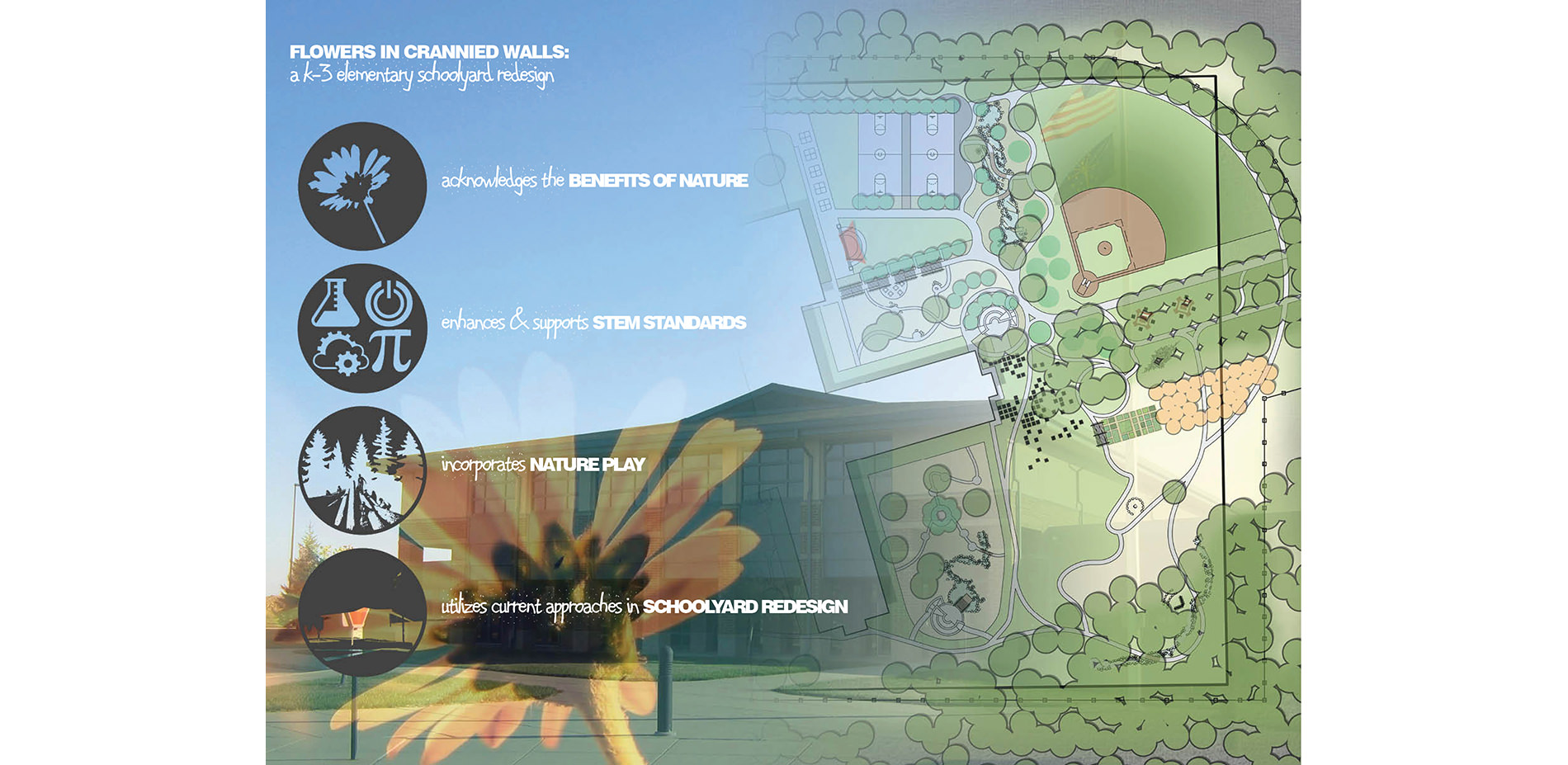
How might a traditional elementary schoolyard environment be transformed into an environment that acts as a vehicle to teach science, technology, engineering, and math using the activity settings and design elements nature play and current approaches/elements in schoolyard redesign?
Photo Credit: Taylor D Metz
Media: Please submit high-resolution image requests to images@asla.org.
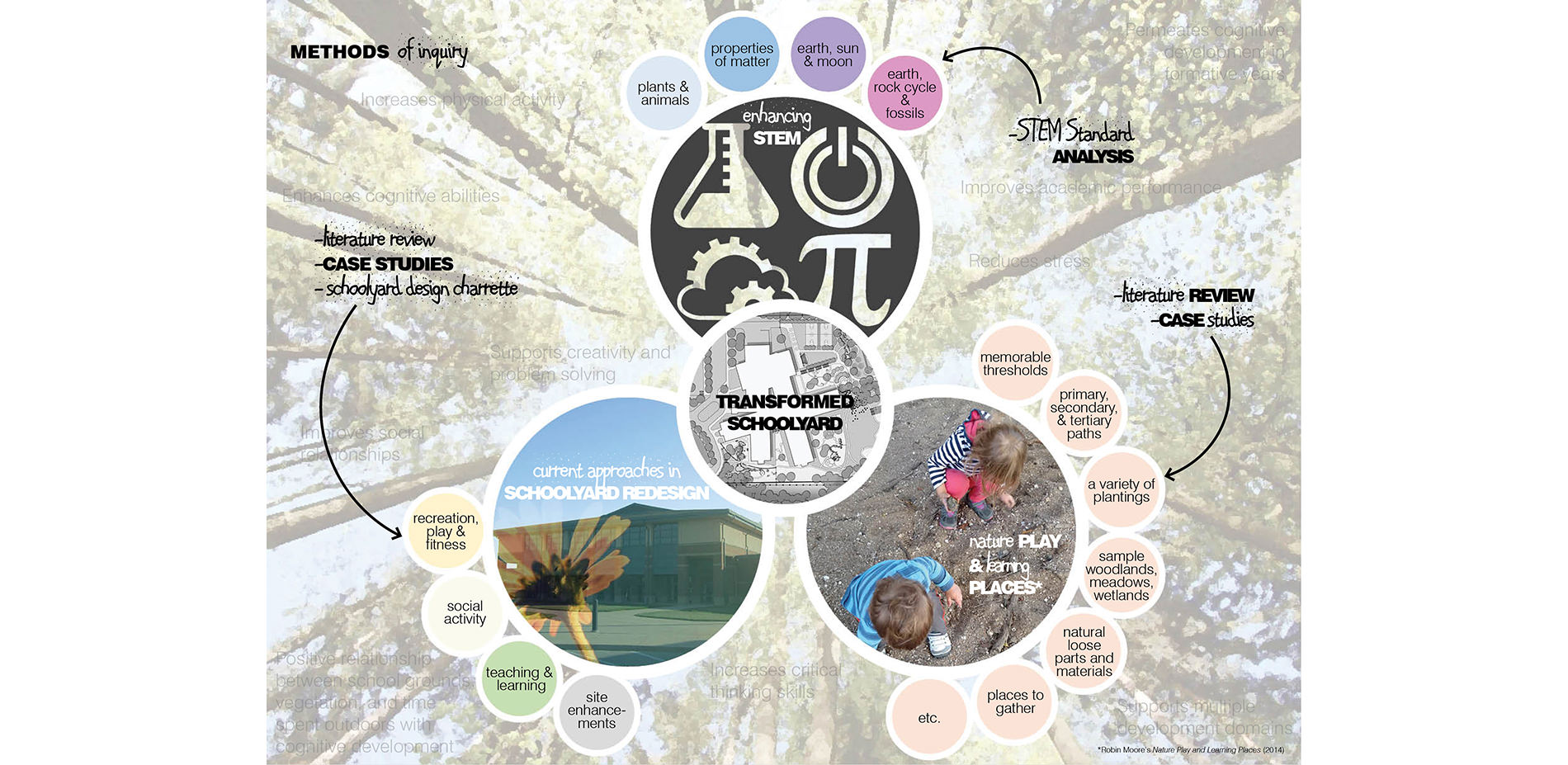
Embracing the documented benefits of nature for children, the transformed schoolyard exists at the intersection of outdoor STEM learning settings, the activity settings and design elements of nature play and current approaches in schoolyard redesign.
Photo Credit: Taylor D Metz
Media: Please submit high-resolution image requests to images@asla.org.
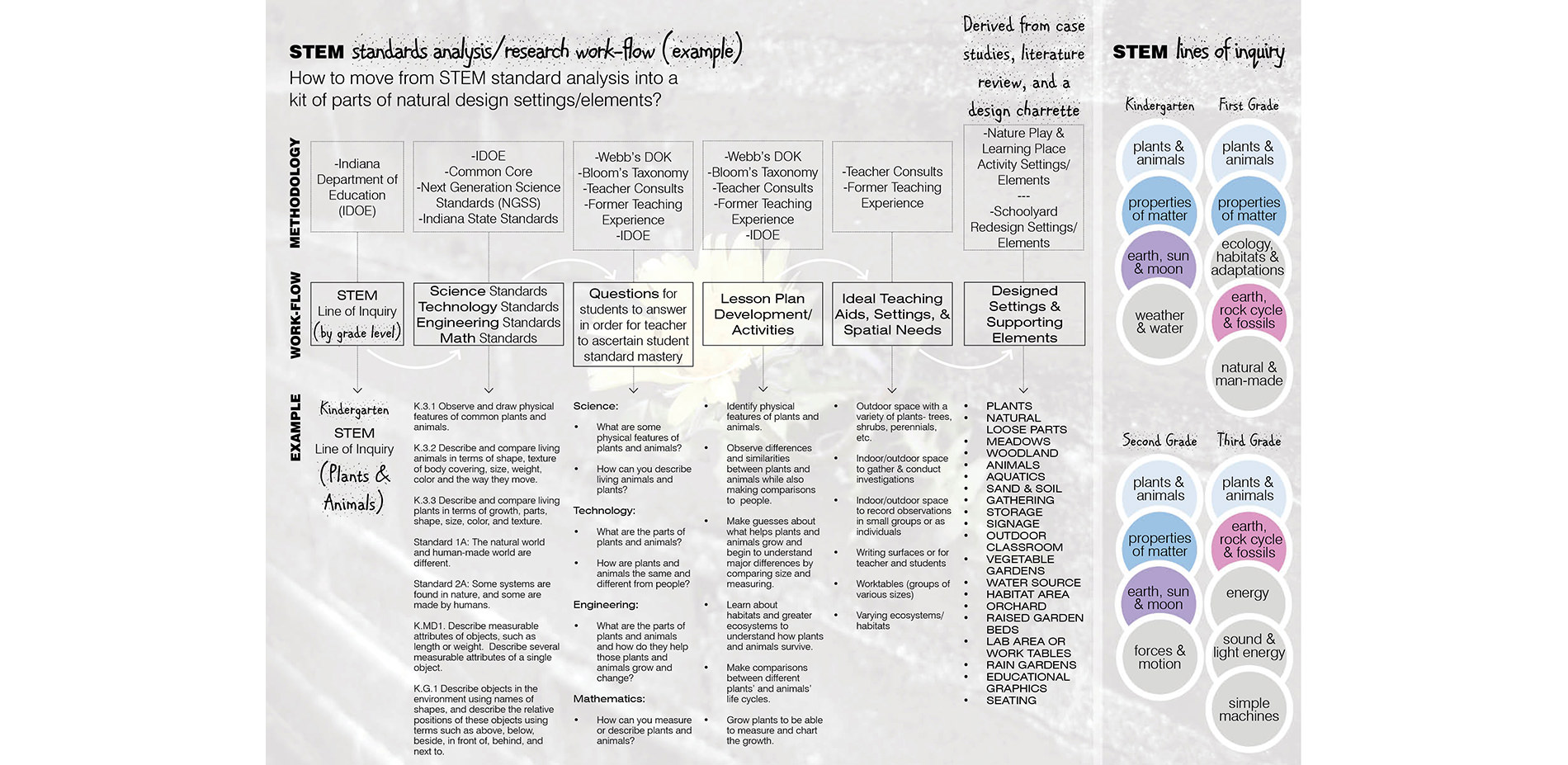
The STEM standard analysis work-flow (as depicted in the Kindergarten example) was conducted for each of the eleven STEM lines of inquiry for grades kindergarten through third grade. The four lines of inquiry that spanned each grade were selected for the focus of this project.
Photo Credit: Taylor D Metz
Media: Please submit high-resolution image requests to images@asla.org.
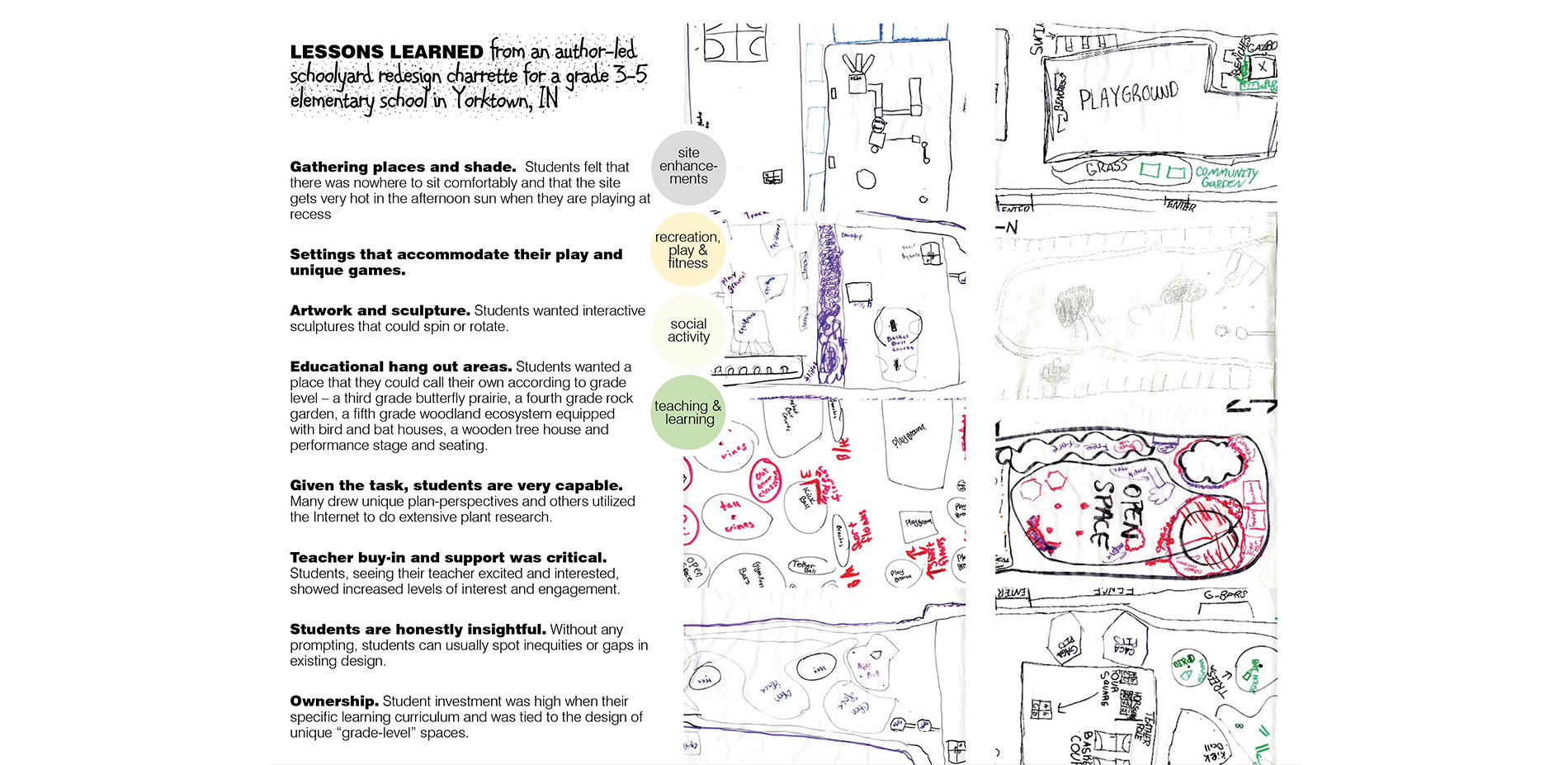
Lessons learned from the author’s previous experiences as an organizer for a schoolyard design charrette in Yorktown, Indiana, reveal the astounding intuition of students as a key stakeholder in the design process for schoolyard settings.
Photo Credit: Taylor D Metz
Media: Please submit high-resolution image requests to images@asla.org.
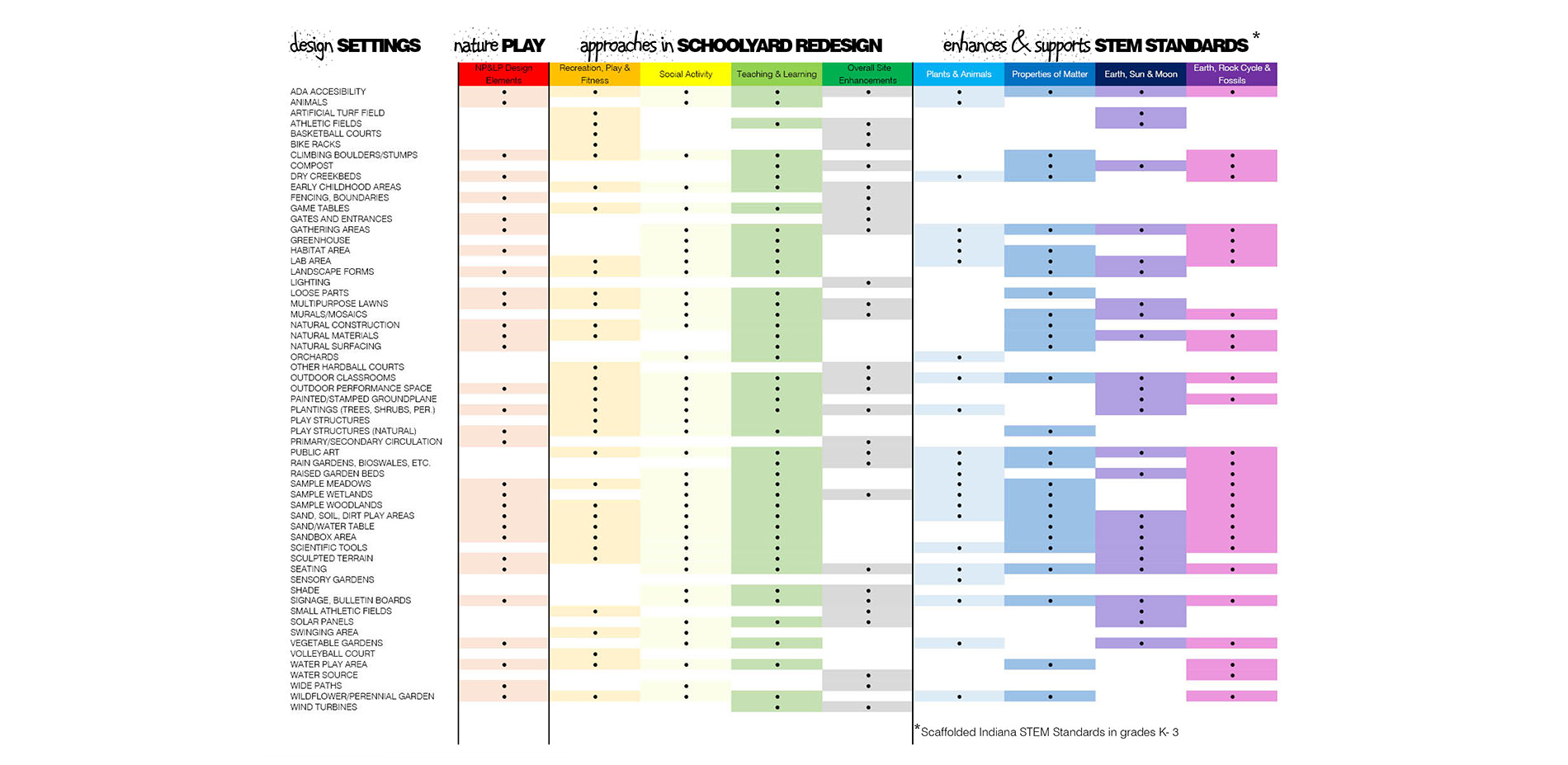
An expansive literature review compiled with dozens of nature play and schoolyard redesign case studies reveal a non-exhaustive list of common design settings and elements that support STEM teaching/learning.
Photo Credit: Taylor D Metz
Media: Please submit high-resolution image requests to images@asla.org.
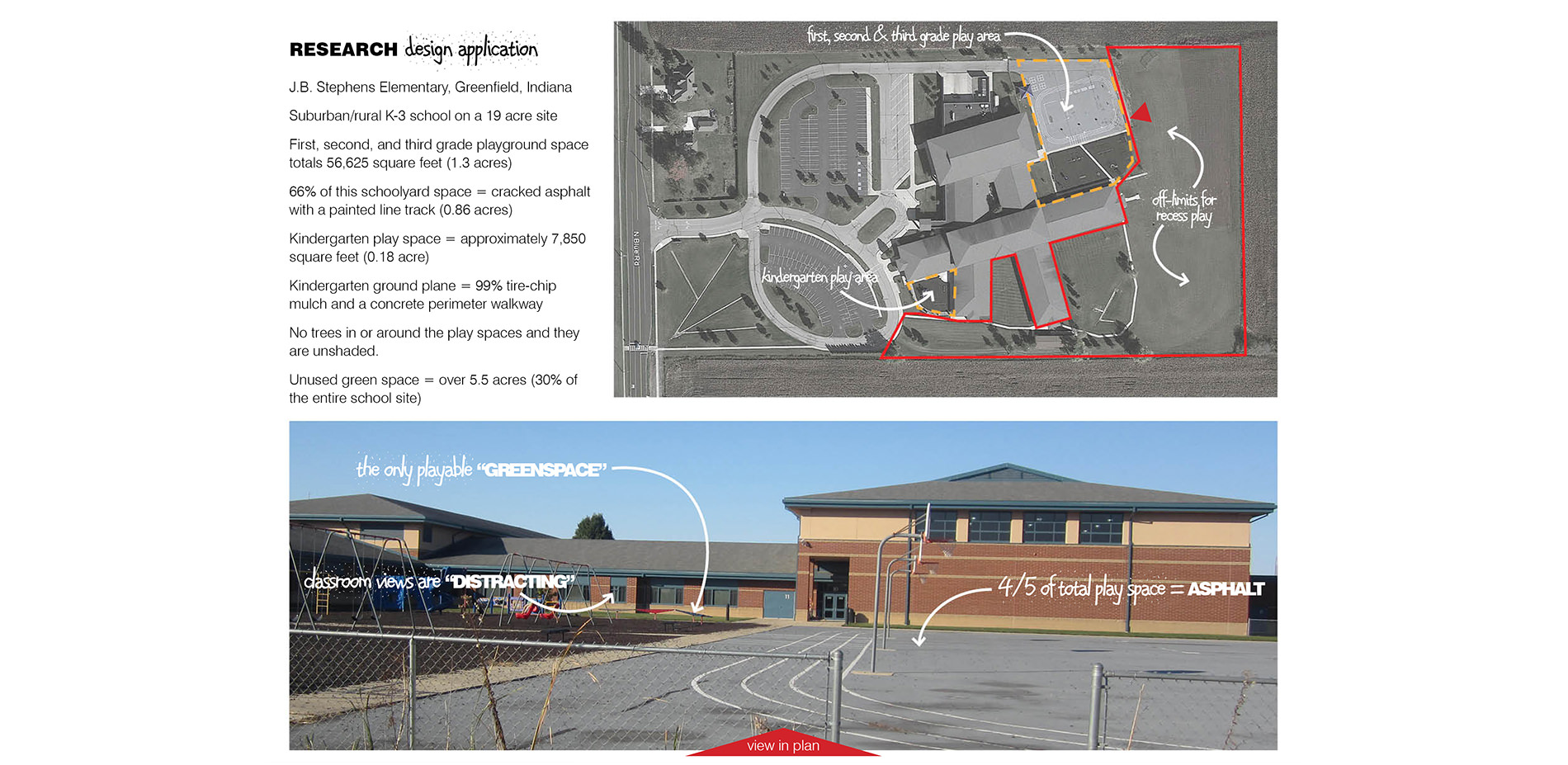
Literature review and dozens of nature play and schoolyard redesign case studies reveal a list of common design elements from which to draw from for schoolyard design that supports all three research domains.
Photo Credit: Taylor D Metz
Media: Please submit high-resolution image requests to images@asla.org.
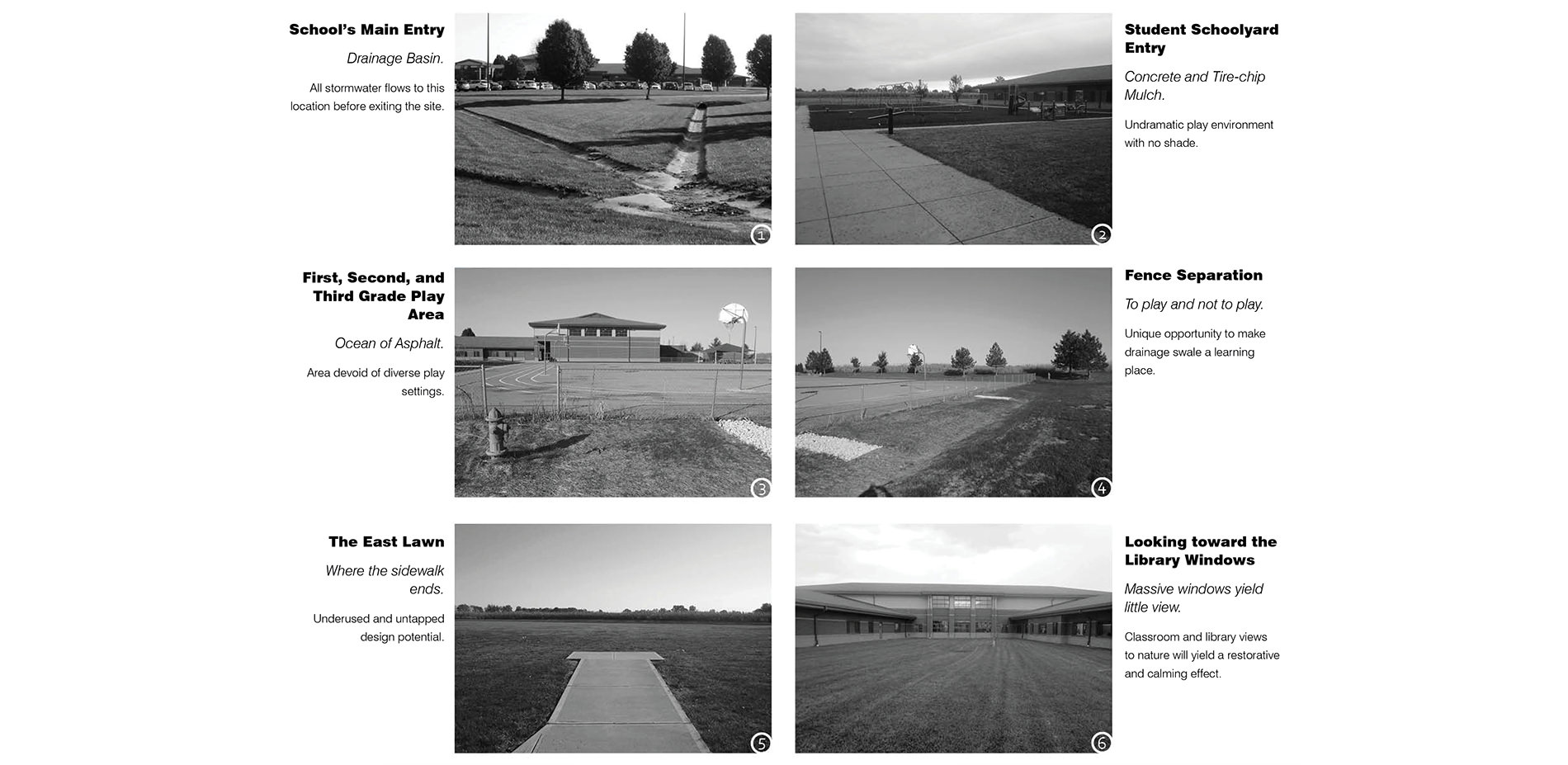
Inventory of existing spatial conditions on the site reveal a blank canvass with enormous design opportunity potential. (See corresponding numbered “after design” perspectives)
Photo Credit: Taylor D Metz
Media: Please submit high-resolution image requests to images@asla.org.
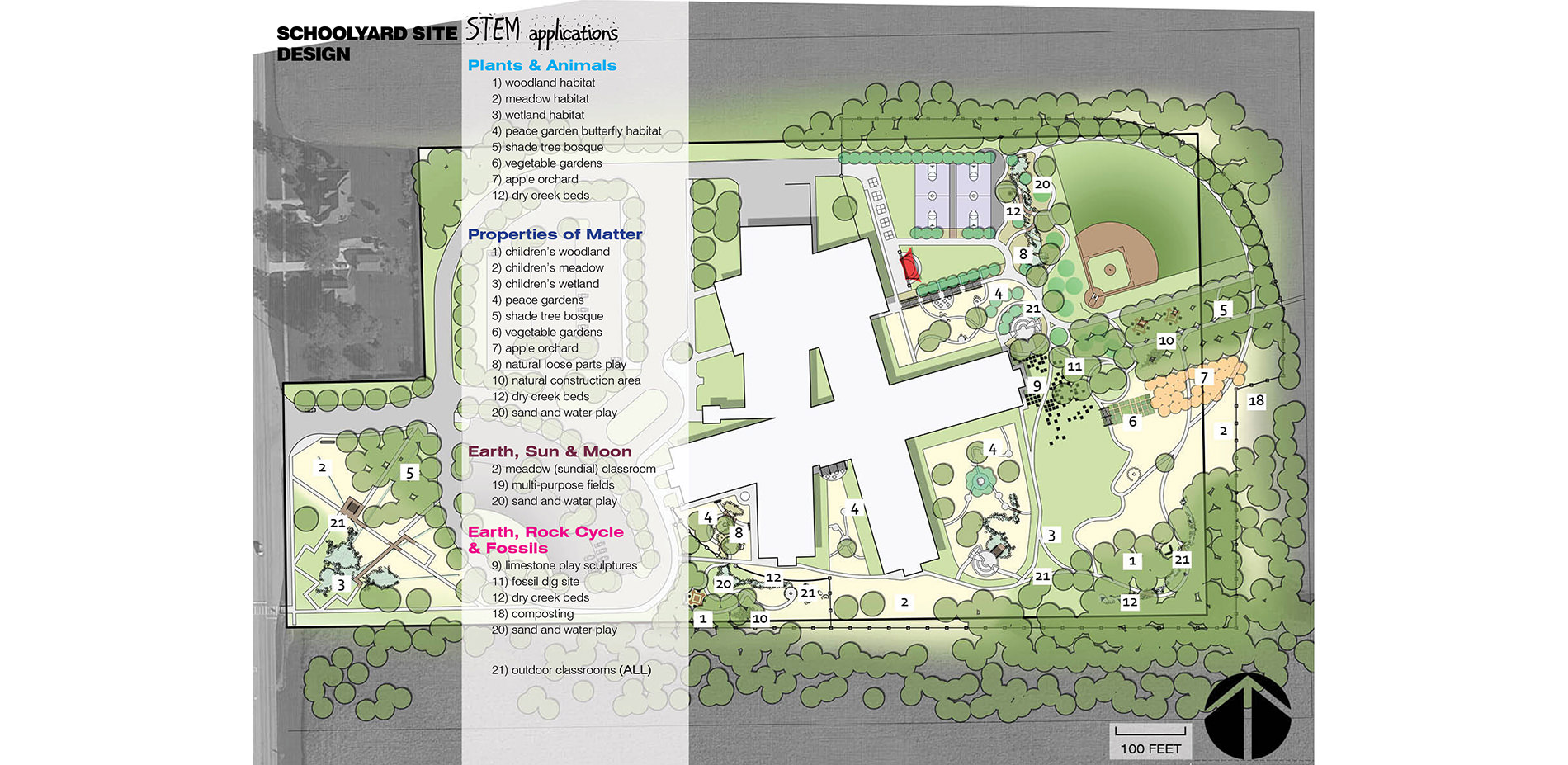
“Playgrounds don’t get funding ... outdoor learning environments do.” -Nilda Cosco and Robin Moore, ASLA Conference 2015, PPN Meeting. Linking specific outdoor learning environments with STEM lines of inquiry provides a powerful illustration for funders, teachers and administrators.
Photo Credit: Taylor D Metz
Media: Please submit high-resolution image requests to images@asla.org.
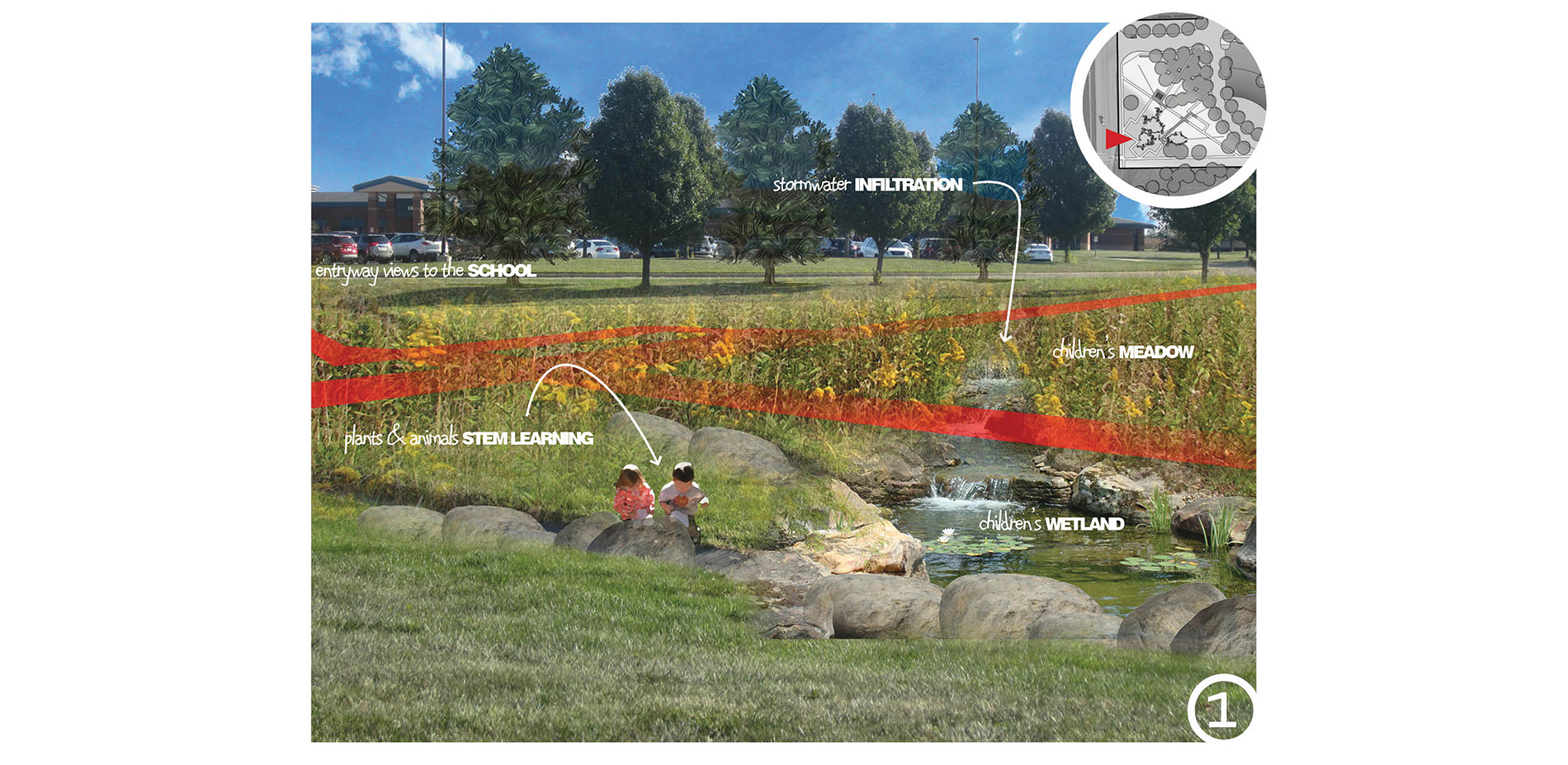
Newly designed wetland entryway functions as a symbolic representation for students and visitors alike that this school is a different type of learning setting that places value on natural systems.
Photo Credit: Taylor D Metz
Media: Please submit high-resolution image requests to images@asla.org.

Upon exiting the school for recess, instead of a sea of asphalt and tire-chip mulch, students are met with a 100-foot vegetated tunnel that acts as a portal into a different kind of play and learning place.
Photo Credit: Taylor D Metz
Media: Please submit high-resolution image requests to images@asla.org.

The asphalt play area is converted into a diverse setting of play and learning spaces including a performance stage, a stormwater-wicking seat lawn and bioswales, a hardball playing court, and an accessible native stone boulder transition into the sand and water play area.
Photo Credit: Taylor D Metz
Media: Please submit high-resolution image requests to images@asla.org.

Existing drainage swale is modified to incorporate a dry creek bed that doubles as an area for sand and water play. These activity settings help to enhance all four STEM line of inquiries.
Photo Credit: Taylor D Metz
Media: Please submit high-resolution image requests to images@asla.org.
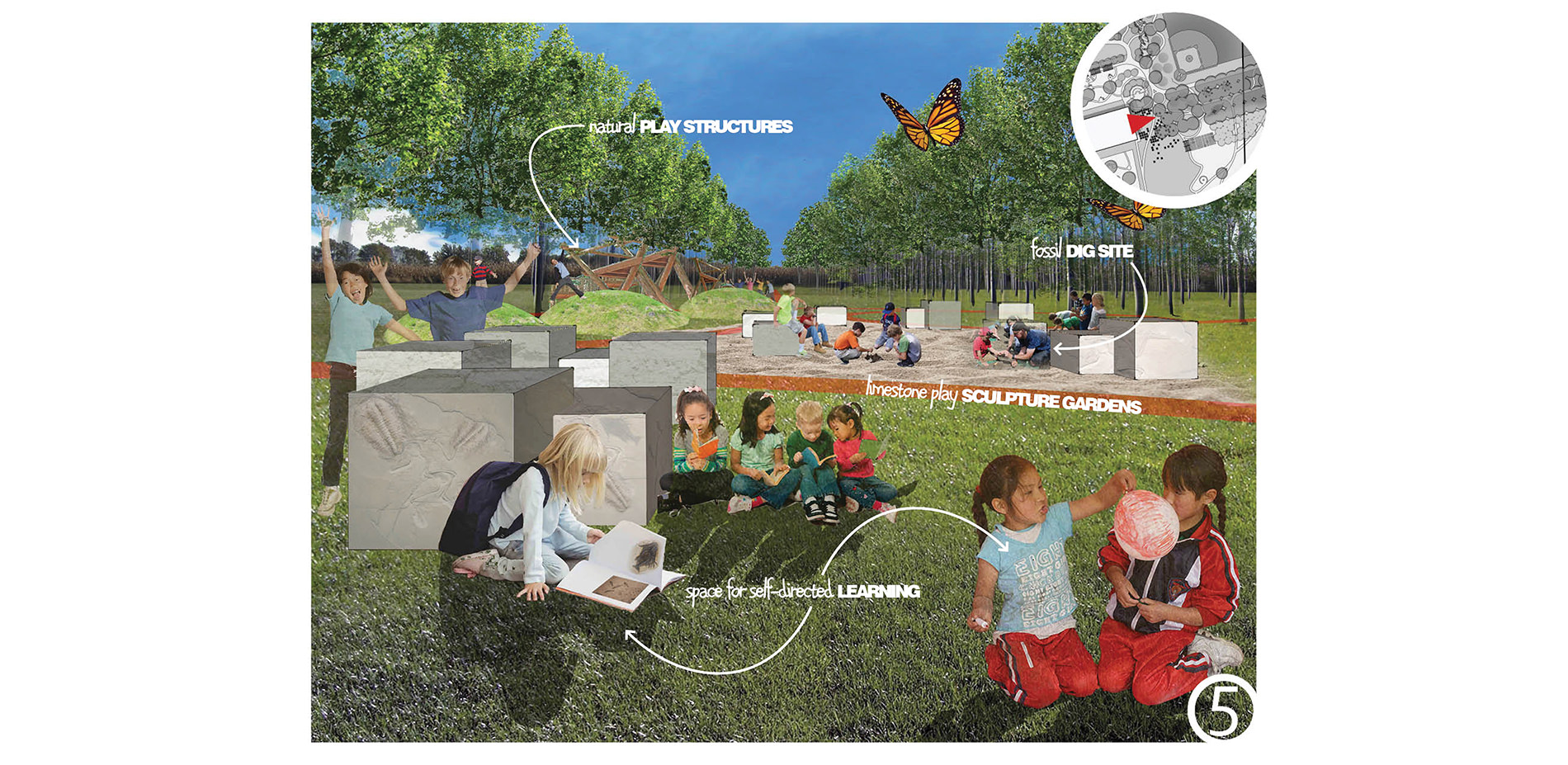
Viewing through the Indiana limestone play sculpture garden into the shade tree bosque.
Photo Credit: Taylor D Metz
Media: Please submit high-resolution image requests to images@asla.org.
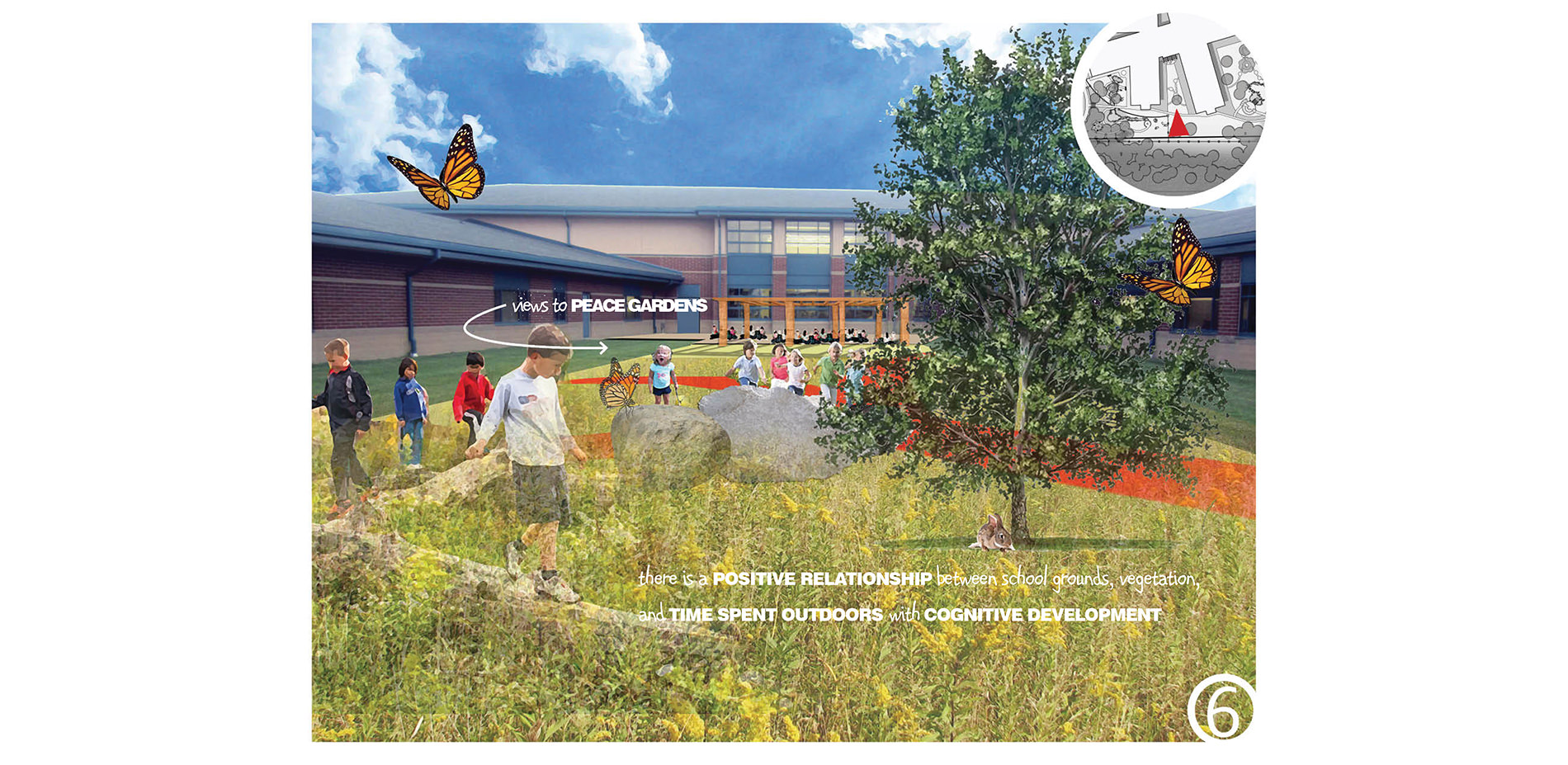
Butterfly Peace Gardens outside the library and classroom windows provide habitat for a variety of plant life, insects, birds, and other small mammals. This enhances STEM learning for grades K-3.
Photo Credit: Taylor D Metz
Media: Please submit high-resolution image requests to images@asla.org.

















